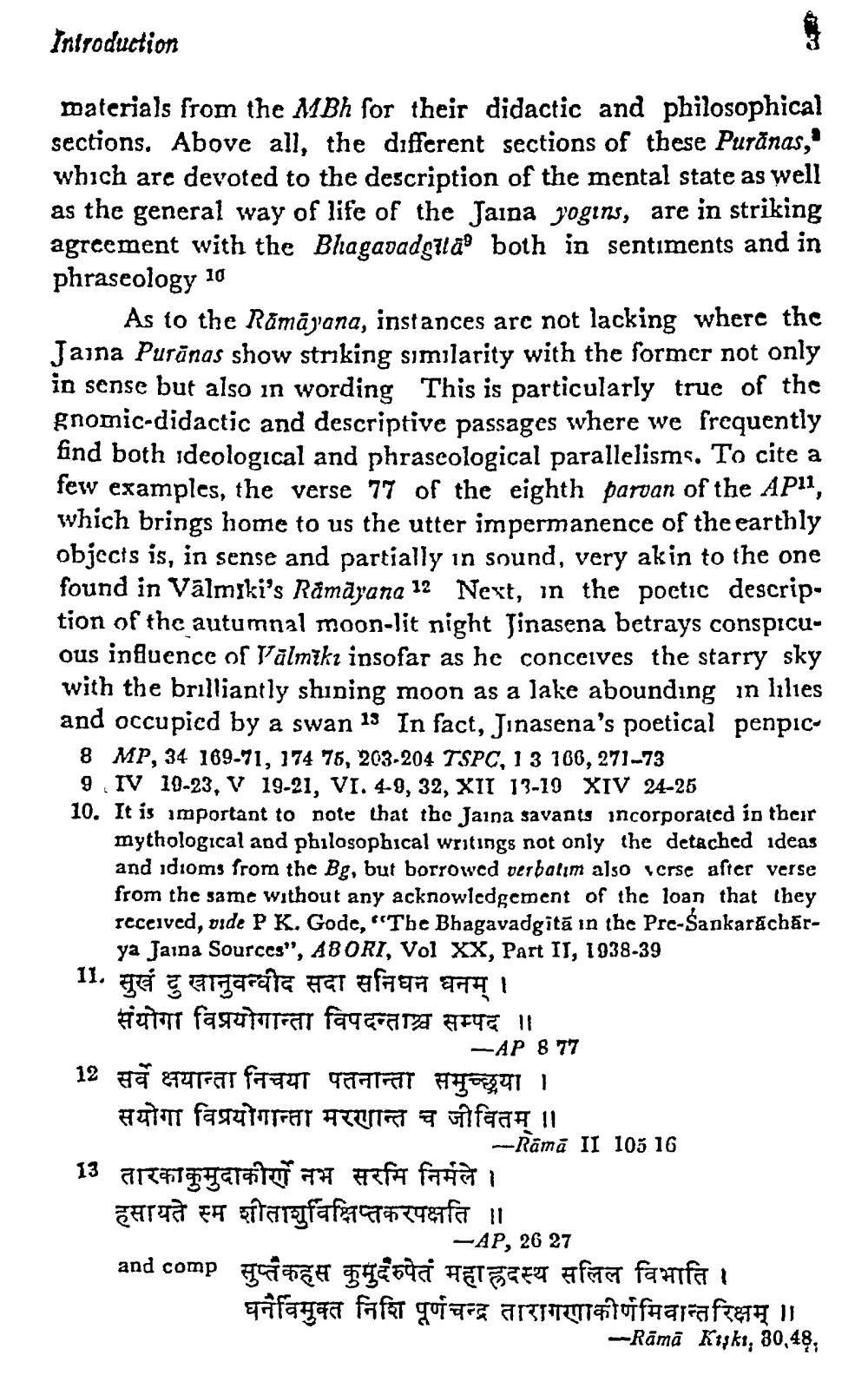________________
Introduction
materials from the MBh for their didactic and philosophical sections. Above all, the different sections of these Puranas," which are devoted to the description of the mental state as well as the general way of life of the Jaina yogins, are in striking agreement with the Bhagavadgita both in sentiments and in phraseology 10
As to the Ramayana, instances are not lacking where the Jaina Purānas show striking similarity with the former not only in sense but also in wording This is particularly true of the gnomic-didactic and descriptive passages where we frequently find both ideological and phraseological parallelisms. To cite a few examples, the verse 77 of the eighth parvan of the AP11, which brings home to us the utter impermanence of the earthly objects is, in sense and partially in sound, very akin to the one found in Valmiki's Ramayana 12 Next, in the poetic description of the autumnal moon-lit night Jinasena betrays conspicuous influence of Valmiki insofar as he conceives the starry sky with the brilliantly shining moon as a lake abounding in lilies and occupied by a swan 13 In fact, Jinasena's poetical penpic
8 MP, 34 169-71, 174 75, 203-204 TSPC, 1 3 106, 271-73
9. IV 19-23, V 19-21, VI. 4-9, 32, XII 13-19 XIV 24-25
10. It is important to note that the Jaina savants incorporated in their mythological and philosophical writings not only the detached ideas and idioms from the Bg, but borrowed verbatim also verse after verse from the same without any acknowledgement of the loan that they received, vide P K. Gode, "The Bhagavadgita in the Pre-Sankaracharya Jaina Sources", ABORI, Vol XX, Part II, 1938-39
11. सुखं दुखानुवन्धीद सदा सनिधन
धनम् । संयोगा विप्रयोगान्ता विपदन्ताश्च सम्पद ||
-AP 8 77
12 सर्वे क्षयान्ता निचया पतनान्ता समुच्छ्रया । सयोगा विप्रयोगान्ता मरणान्त च जीवितम् ॥
cabe
-Rama II 105 16
13 तारका कुमुदाकीर्णे नभ सरमि निर्मले । zarrà en qargfafanuafa 11
-AP, 26 27
and comp सुप्त कहस कुमुदैरुपेतं महाहृदस्य सलिल विभाति । घनैवमुक्त निशि पूर्णचन्द्र तारागरणाकीर्णमिवान्तरिक्षम् ॥ -Rāmā Kişki, 30,48,




